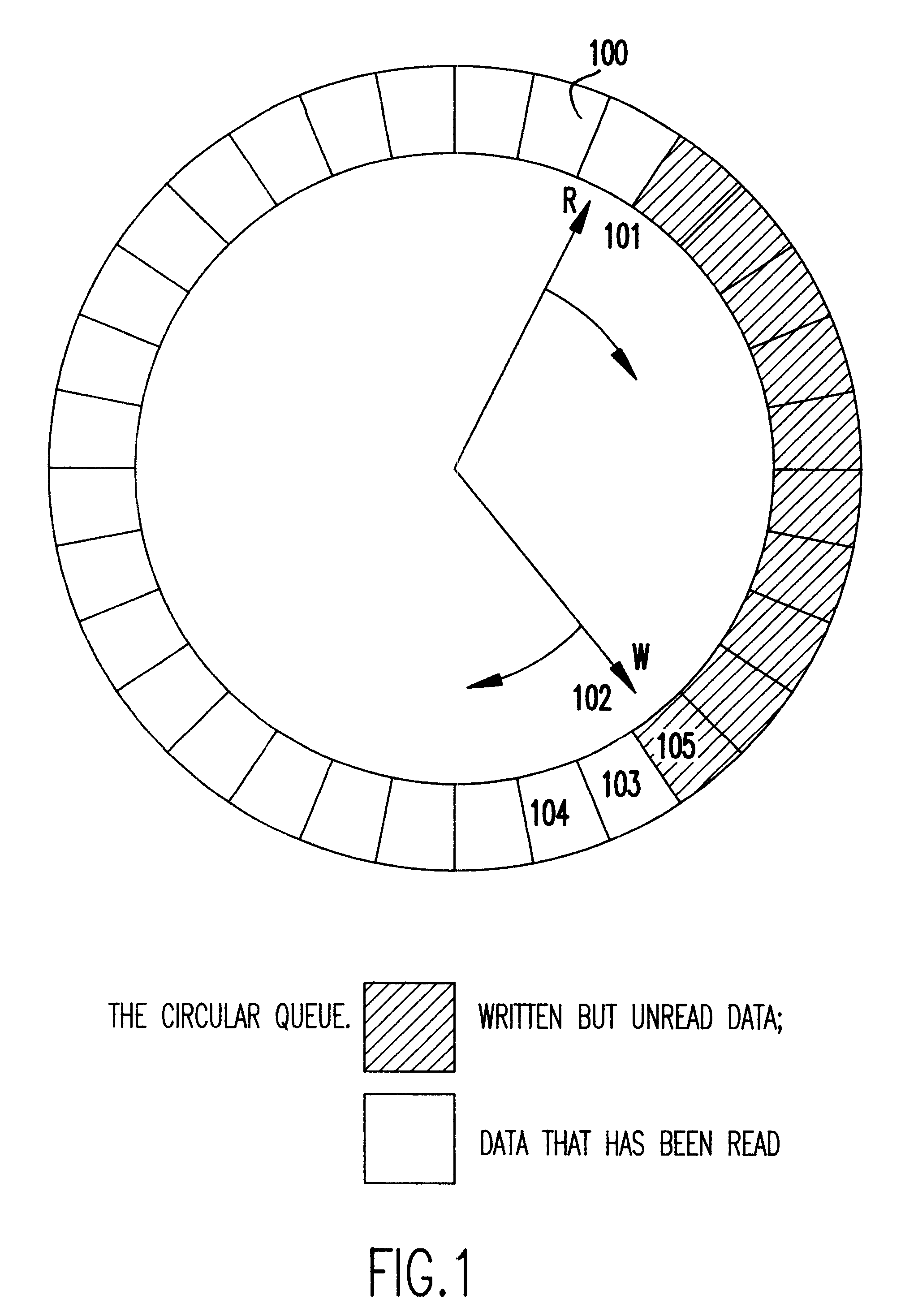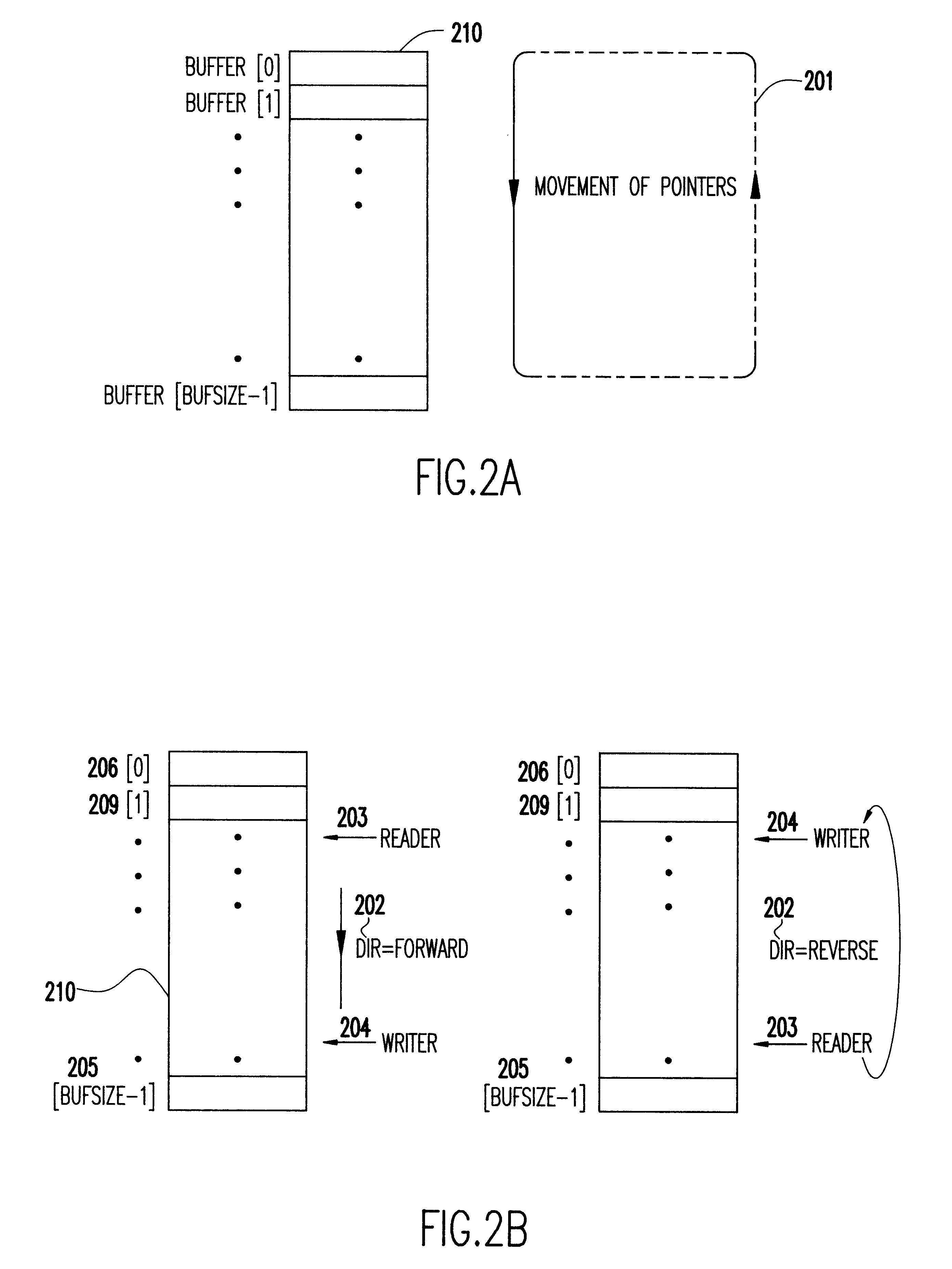Two lock-free, constant-space, multiple-(impure)-reader, single-writer structures
- Summary
- Abstract
- Description
- Claims
- Application Information
AI Technical Summary
Benefits of technology
Problems solved by technology
Method used
Image
Examples
Embodiment Construction
The invention is described in three sections. In the first section, a single-reader-single-writer version of each of our data structures is described. For each structure, a separate subsection is used for details specific to the structure. Each single-reader-single-writer structure can be used only in the context of two concurrent processes / threads, of which only one can be a reader at one time and only one can be a writer at one time. In the section that follows, our multiple-reader-single-writer structures are described. As done in the preceding section for each structure, a separate subsection is used for details specific to the structure. Each multiple-reader-single-writer structure is based on its corresponding single-reader-single-writer structure. Each multiple-reader-single-writer structure allows highly-concurrent access to multiple threads / processes, of which only one can be a writer at one time. The sections include flowcharts for all of the structures. Algorithms present...
PUM
 Login to View More
Login to View More Abstract
Description
Claims
Application Information
 Login to View More
Login to View More - R&D
- Intellectual Property
- Life Sciences
- Materials
- Tech Scout
- Unparalleled Data Quality
- Higher Quality Content
- 60% Fewer Hallucinations
Browse by: Latest US Patents, China's latest patents, Technical Efficacy Thesaurus, Application Domain, Technology Topic, Popular Technical Reports.
© 2025 PatSnap. All rights reserved.Legal|Privacy policy|Modern Slavery Act Transparency Statement|Sitemap|About US| Contact US: help@patsnap.com



